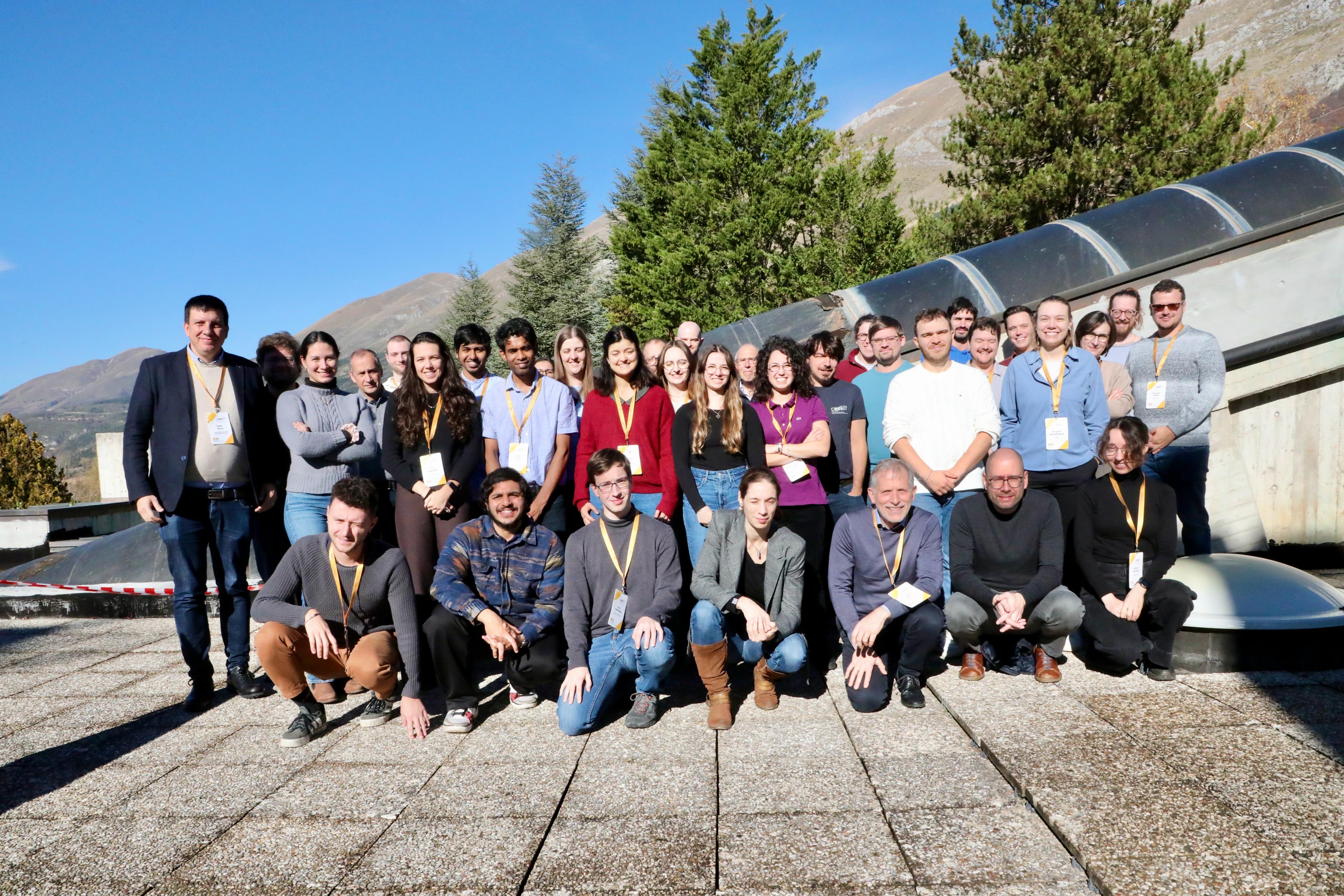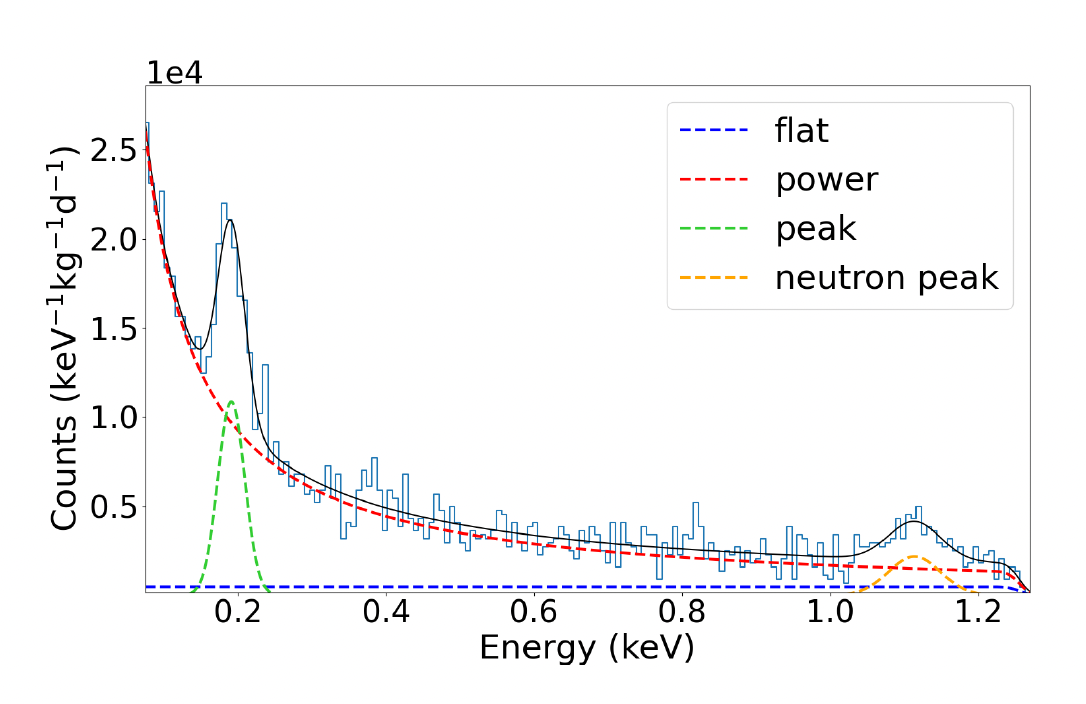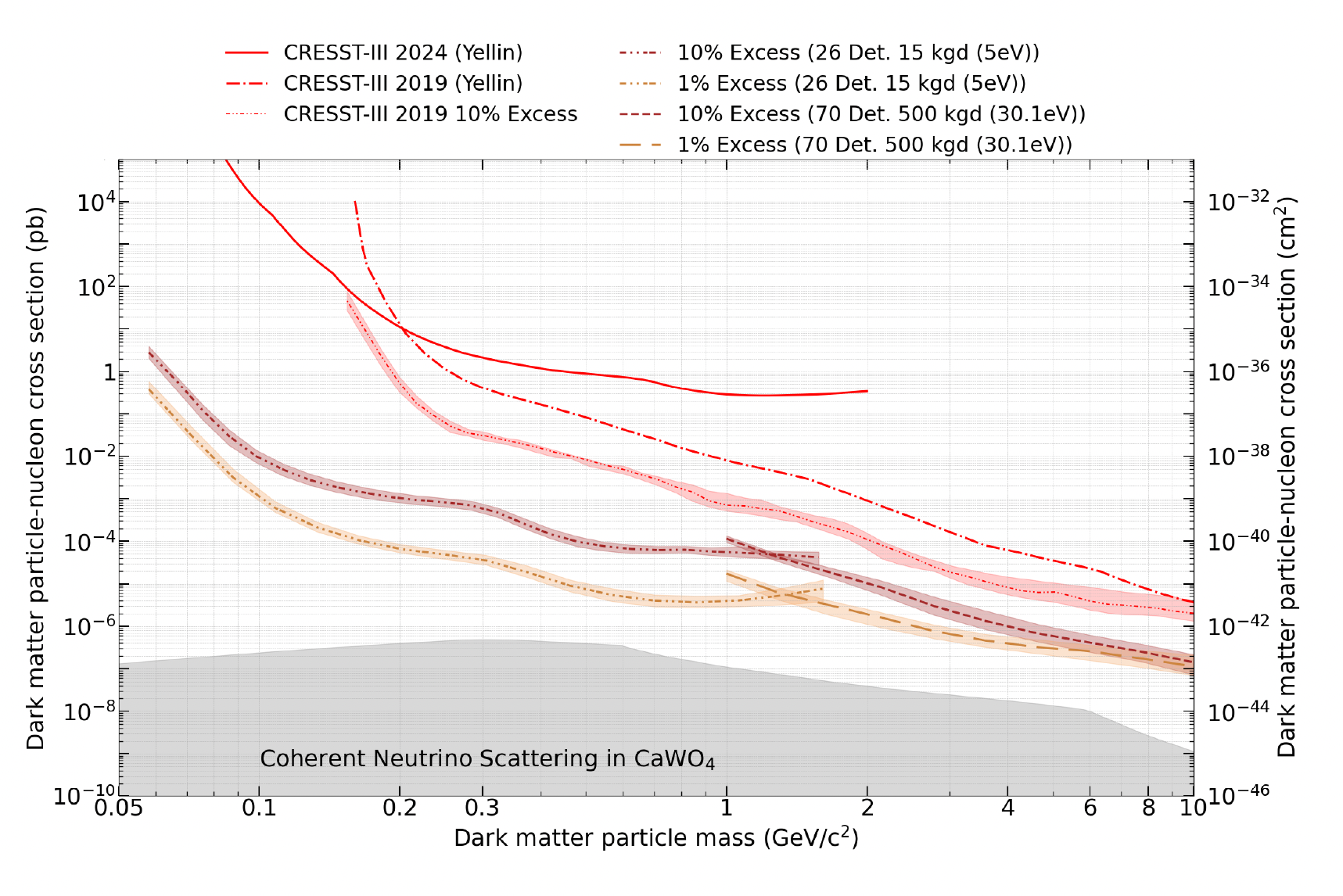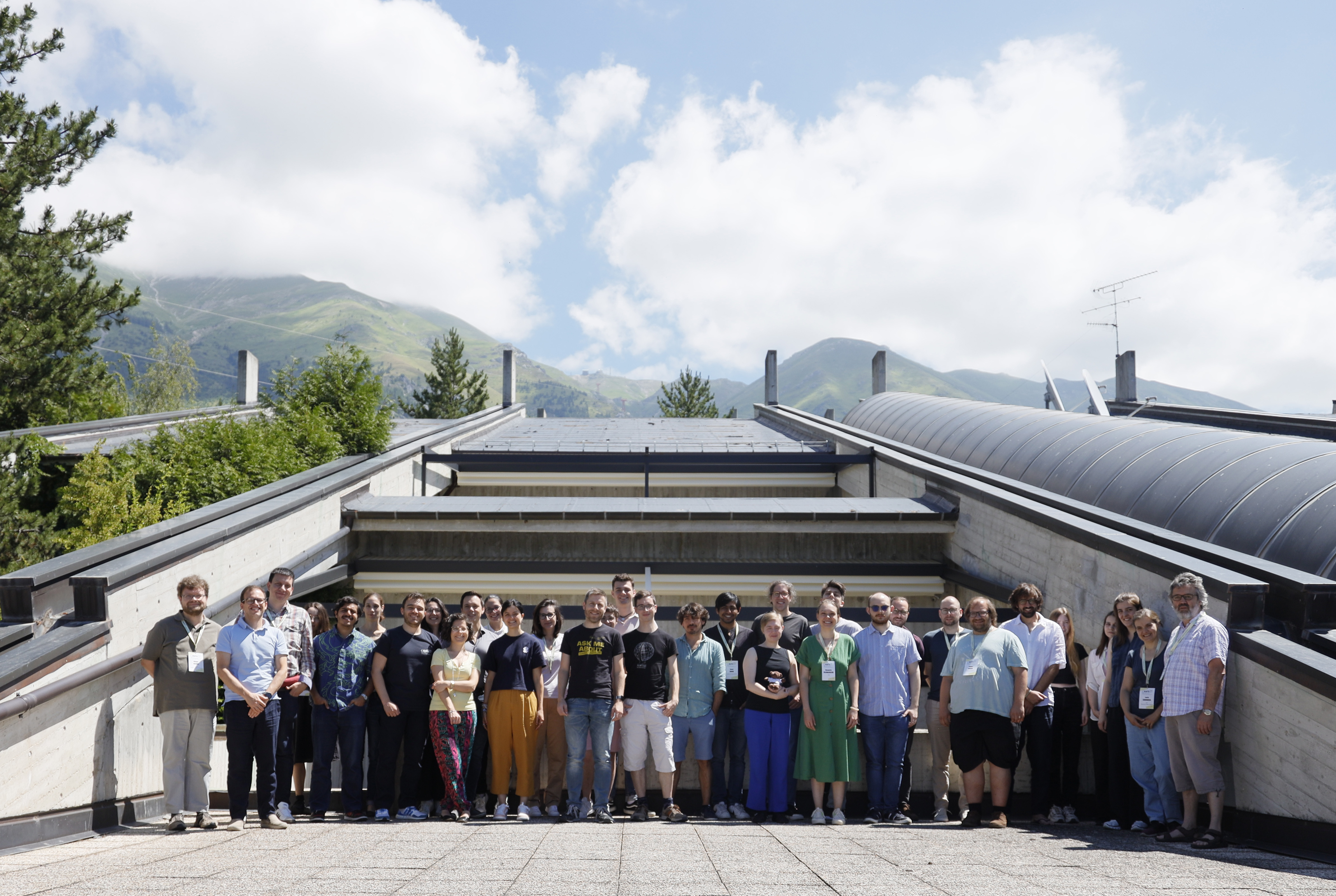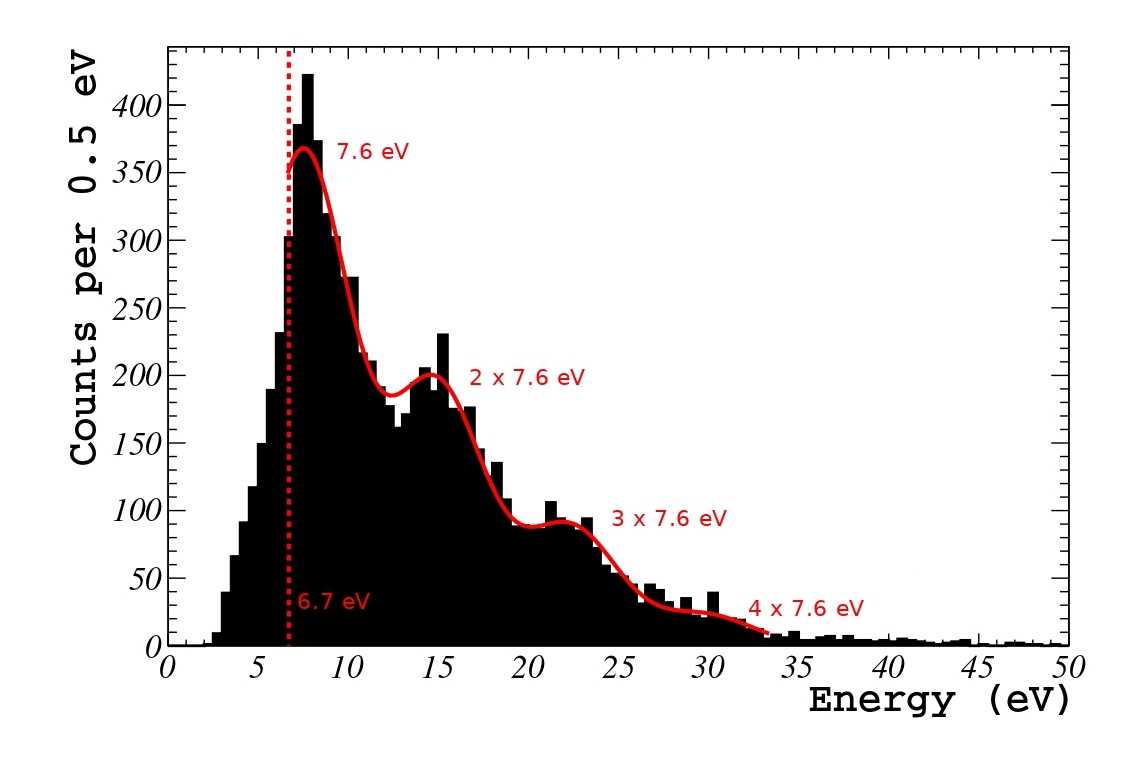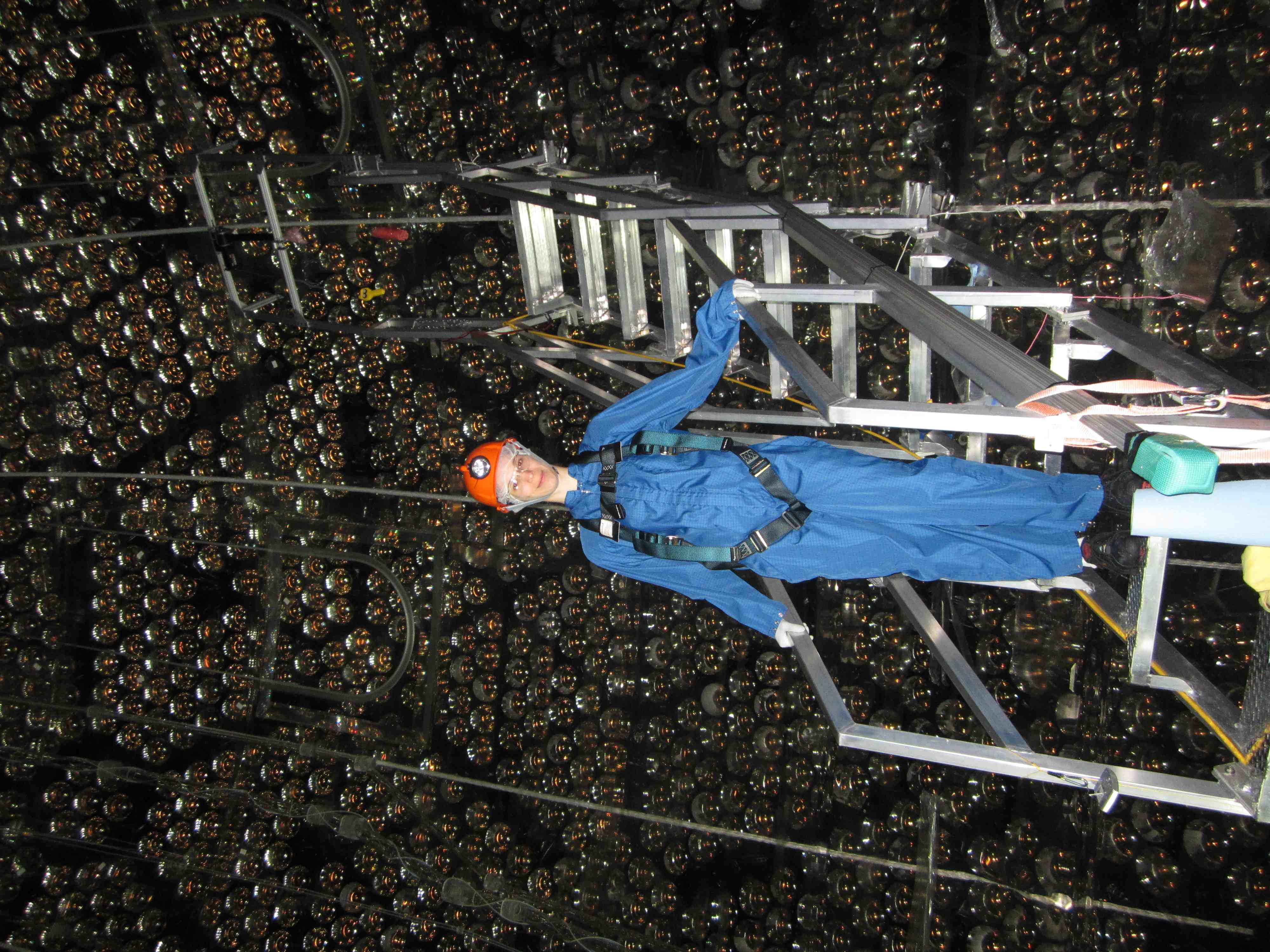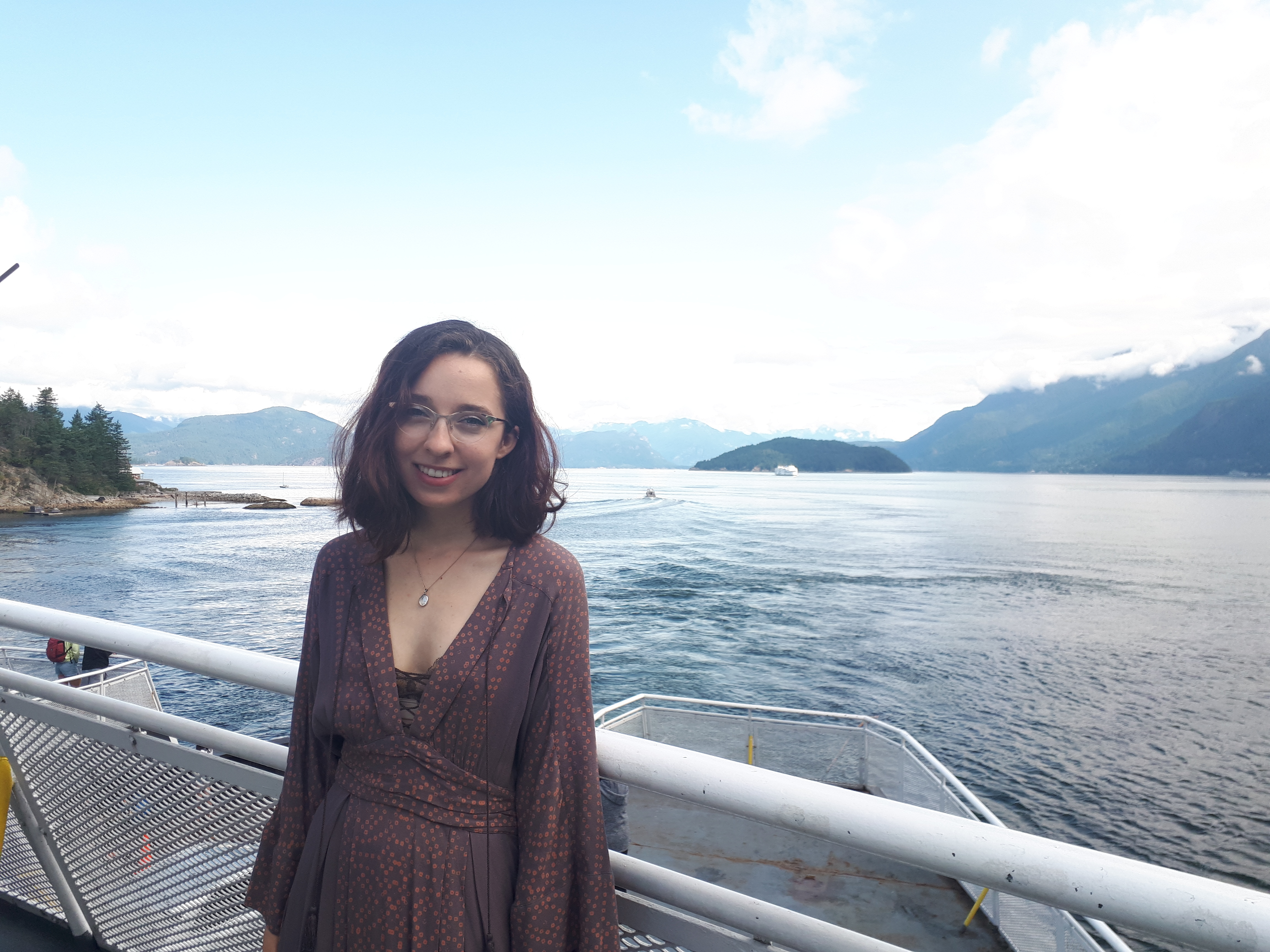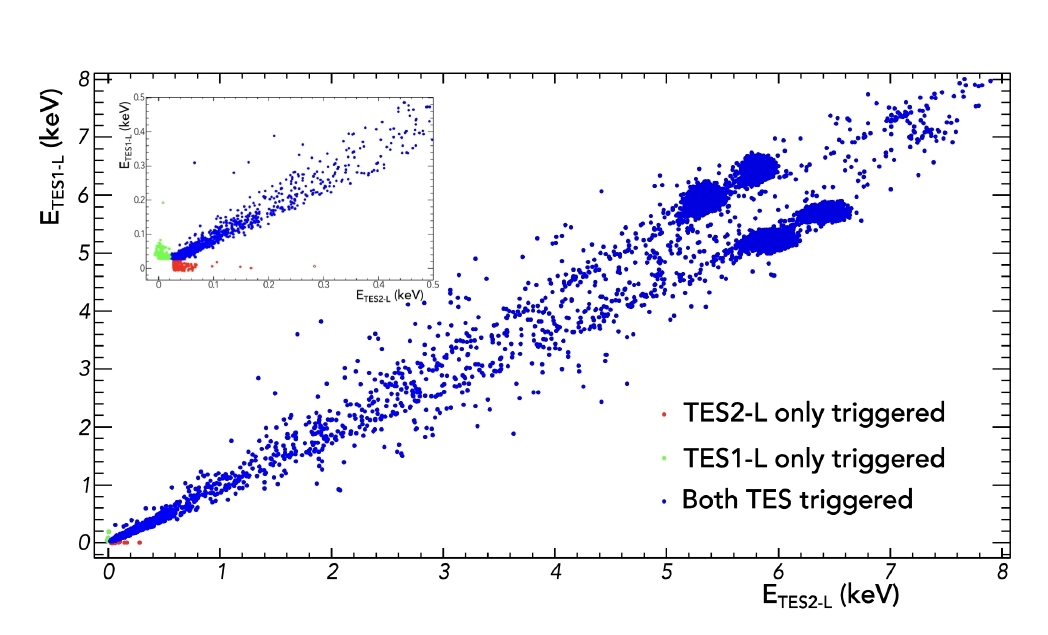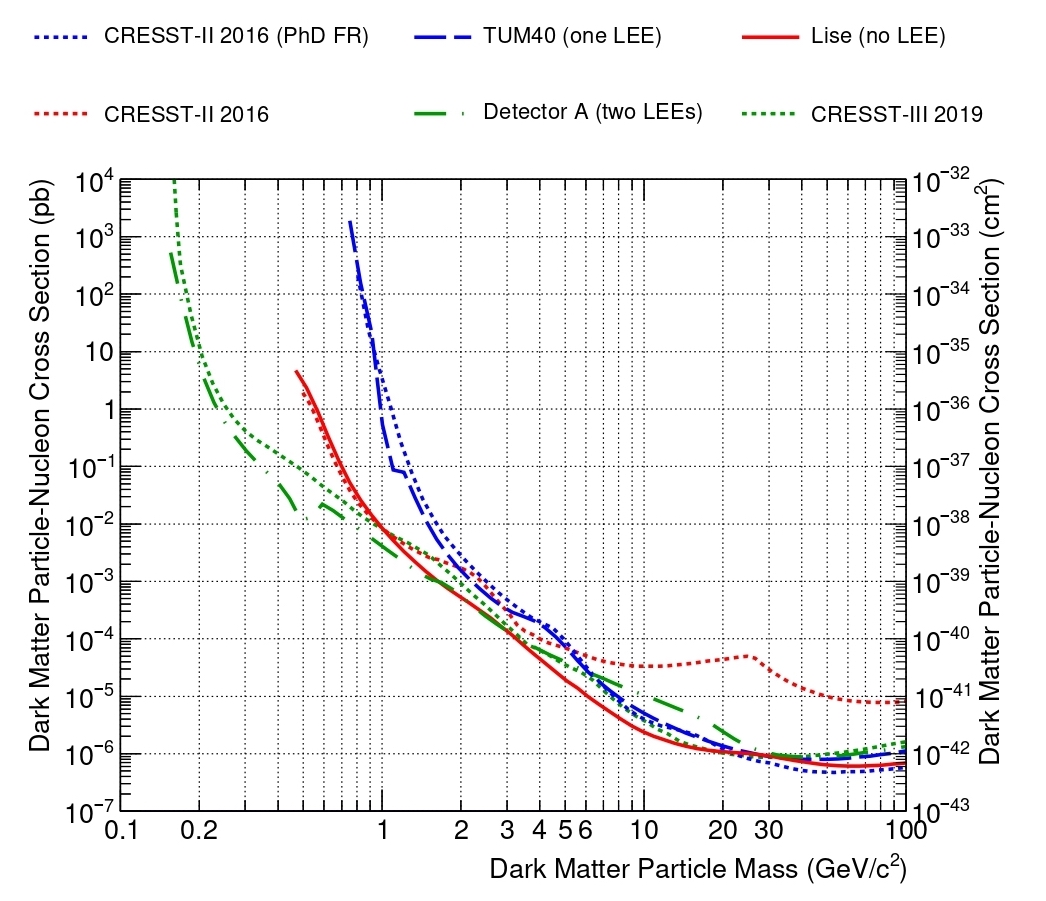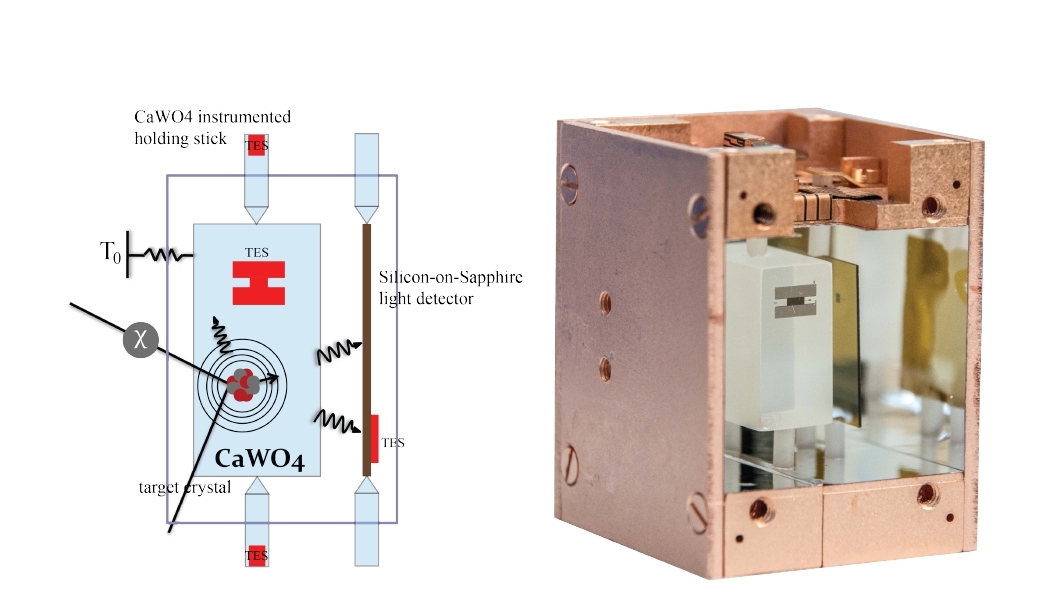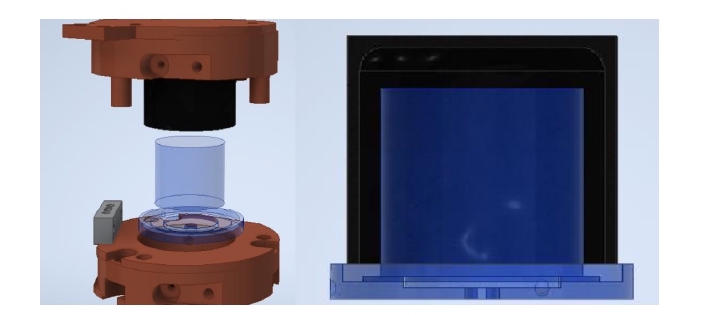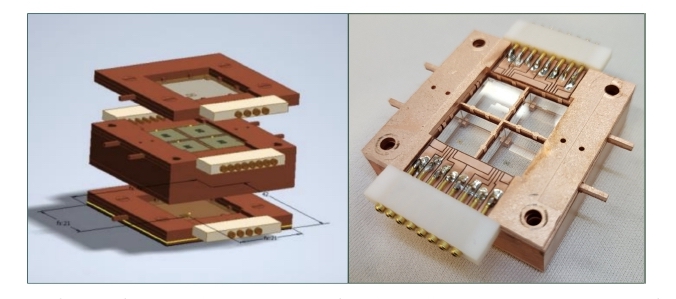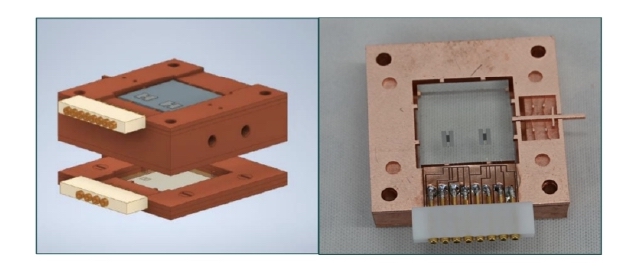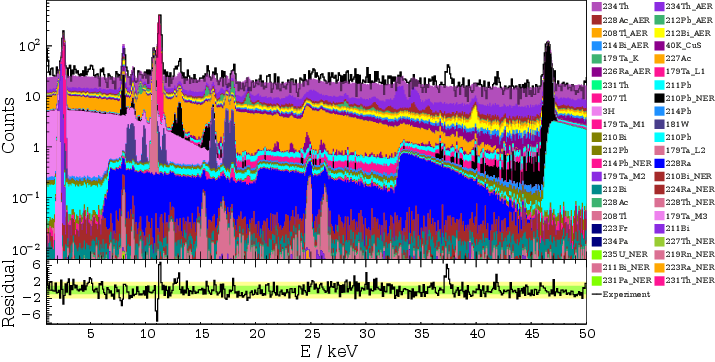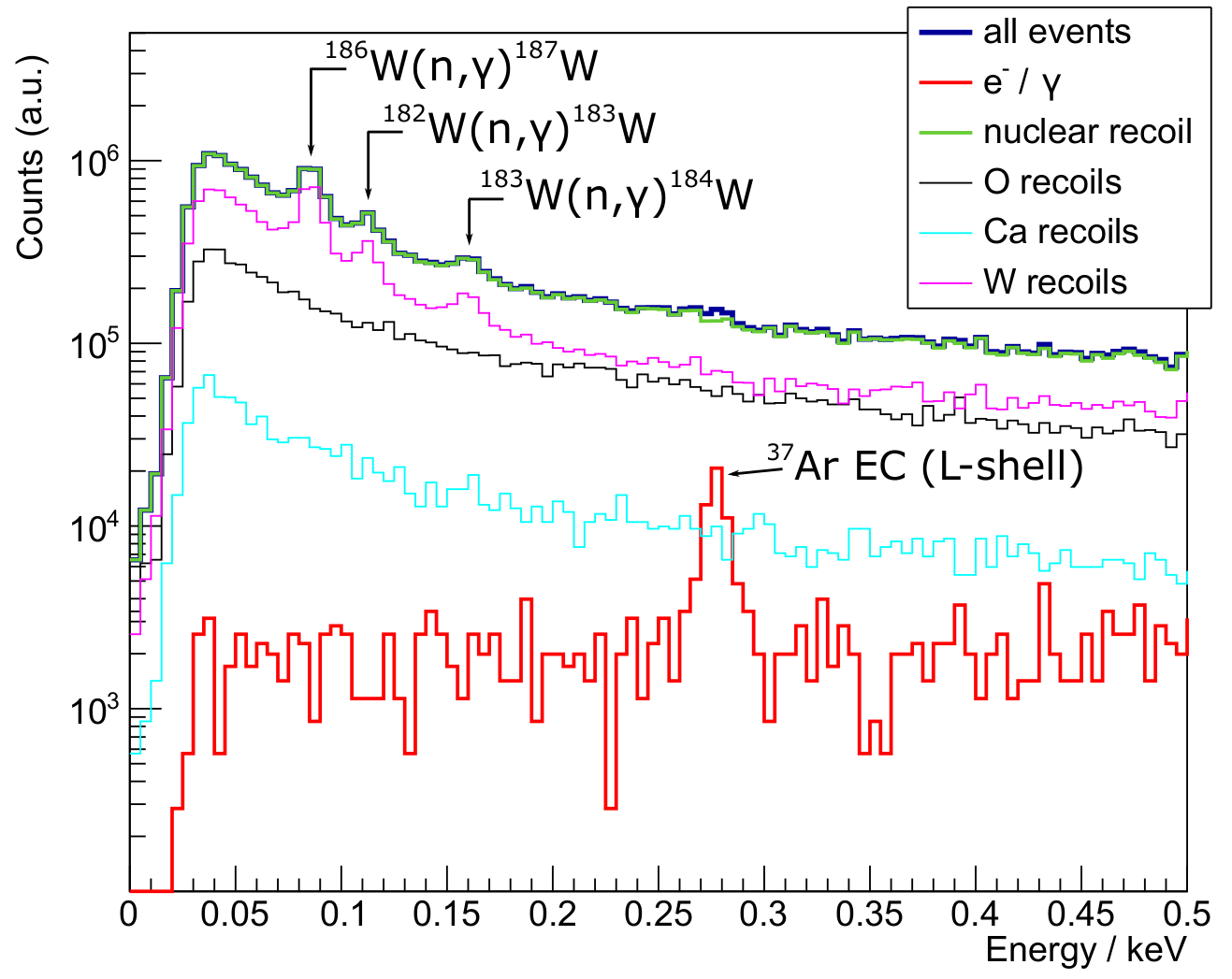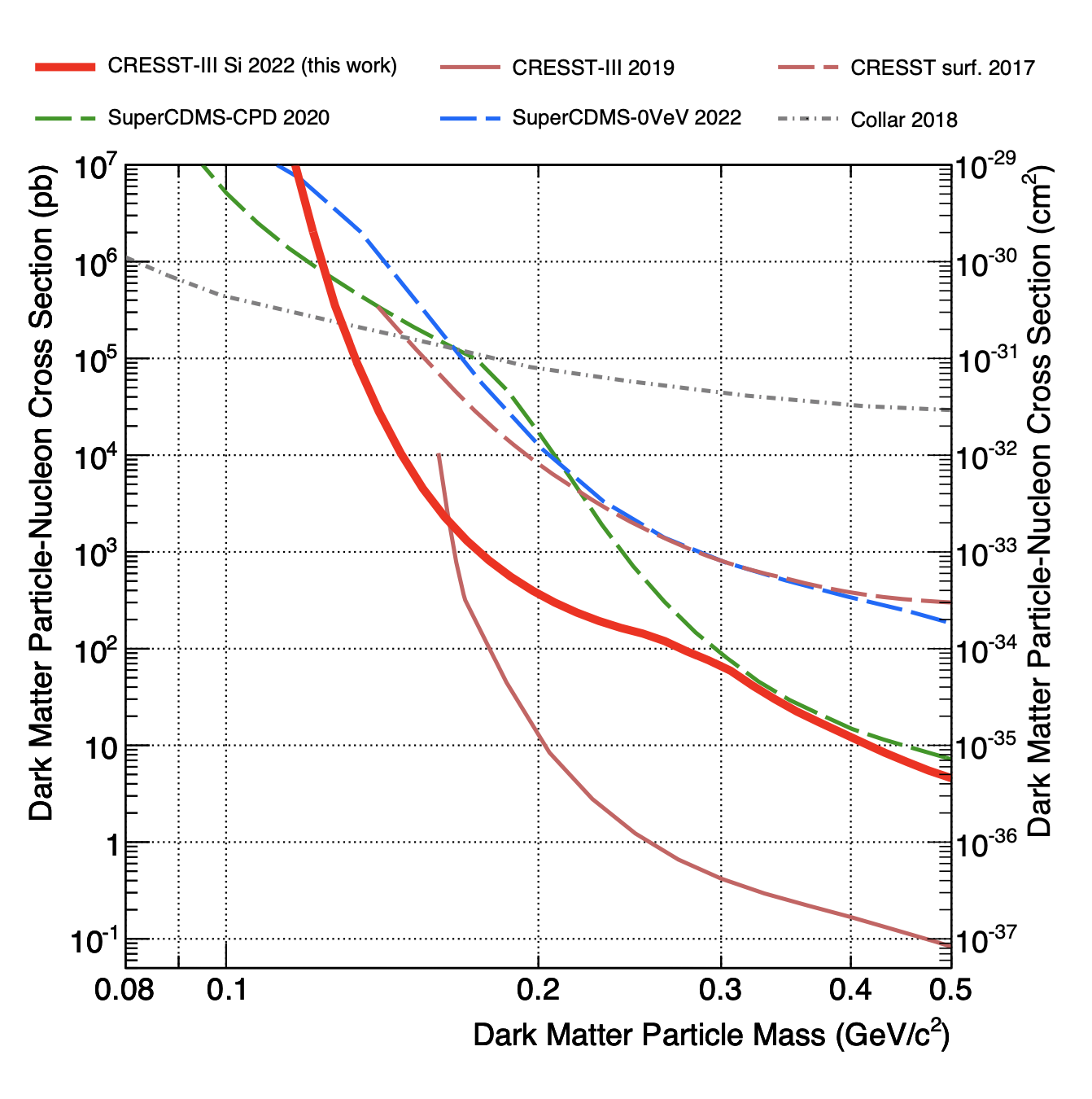News
2025
Observation of a low energy nuclear recoil peak in the neutron calibration data of an sapphire crystal in CRESST-III
The current generation of cryogenic solid state detectors used in direct dark matter and CEνNS searches typically reach energy thresholds of O(10) eV for nuclear recoils. For a reliable calibration in this energy regime a method has been proposed, providing mono-energetic nuclear recoils at low energies ∼100 eV - 1 keV. In this work we report on the observation of a peak at (1113.6+6.5 −6.5) eV in the data of an Al2O3 crystal in CRESST-III, which was irradiated with neutrons from an AmBe calibration source. We attribute this mono-energetic peak to the radiative capture of thermal neutrons on 27Al and the subsequent de-excitation via single γ-emission. We compare the measured results with the outcome of Geant4 simulations and investigate the possibility to make use of this effect for the energy calibration of Al2O3 detectors at low energies. We further investigate the possibility of a shift in the expected energy scale of this effect caused by the creation of defects in the target crystal.
Submitted to PRD (2506.09059)
The CRESST experiment: towards the next-generation of sub-GeV direct dark matter detection
Direct detection experiments have established the most stringent constraints on potential interactions between particle candidates for relic, thermal dark matter and Standard Model particles. To surpass current exclusion limits a new generation of experiments is being developed. The upcoming upgrade of the CRESST experiment will incorporate O(100) detectors with different masses ranging from ~2 g to ~24 g, aiming to achieve unprecedented sensitivity to sub-GeV dark matter particles with a focus on spin-independent dark matter-nucleus scattering. This paper presents a comprehensive analysis of the planned upgrade, detailed experimental strategies, anticipated challenges, and projected sensitivities. Approaches to address and mitigate low-energy excess backgrounds — a key limitation in previous and current sub-GeV dark matter searches — are also discussed. In addition, a long-term roadmap for the next decade is outlined, including other potential scientific applications.
Submitted to Nature (The Direct Detection of Dark Matter in the Underground Laboratory Collection - Communications Physics) (2505.01183)
2024

CRESST Collaboration meeting - December 2024
The collaboration meeting took place in person at Max Planck Institute for Physics from 3rd untill 5th December 2024.
Successful Start of New Measurement Campaign!
Here's a glimpse into the process of mounting detectors:

Constraints on self-interaction cross-sections of dark matter in universal bound states from direct detection
Published in Eur. Phys. J. C: https://doi.org/10.1140/epjc/s10052-024-13472-4
Λ - Cold Dark Matter (Λ CDM) has been successful at explaining the large-scale structures in the universe but faces severe issues on smaller scales when compared to observations. Introducing self-interactions between dark matter particles claims to provide a solution to the small-scale issues in the Λ CDM simulations while being consistent with the observations at large scales. The existence of the energy region in which these self-interactions between dark matter particles come close to saturating the S-wave unitarity bound can result in the formation of dark matter bound states called darkonium. In this scenario, all the low energy scattering properties are determined by a single parameter, the inverse scattering length γ. In this work, we set bounds on γ by studying the impact of darkonium on the observations at direct detection experiments using data from CRESST-III and XENON1T. The exclusion limits on γ are then subsequently converted to exclusion limits on the self-interaction cross-section and compared with the constraints from astrophysics and N-body simulations.
First Observation of Single Photons in a CRESST Detector and New Dark Matter Exclusion Limits
Published in PRD: https://doi.org/10.1103/PhysRevD.110.083038
The main goal of the CRESST-III experiment is the direct detection of dark matter particles via their scattering off target nuclei in cryogenic detectors. In this work we present the results of a Silicon-On-Sapphire (SOS) detector with a mass of 0.6 g and an energy threshold of (6.7 ± 0.2) eV with a baseline energy resolution of (1.0 ± 0.2) eV. This allowed for a calibration via the detection of single luminescence photons in the eV-range, which could be observed in CRESST for the first time. We present new exclusion limits on the spin-independent and spin-dependent dark matter-nucleon cross section that extend to dark matter particle masses of less than 100 MeV/c2.
New group joined CRESST: a few words from the group leader Belina von Krosigk
We are currently a colorful mix of people, from young (pre-BSc thesis internship) to old… (me…) from three continents (Europe, America, and Asia), from two institutions (Heidelberg University and KIT), and actively working on three different experiments (CRESST, DELight, and SuperCDMS). The SuperCDMS era has ended for me beginning of this year after 8.5 years (just completing local supervision now). And my new era has started with CRESST in spring this year :) My group is currently picking up on how to do CRESST data taking and analysis with a focus on raw data analysis and partially continuing Felix’s ML work. And overall one focus of my group in general, no matter for which of the experiments, is the analysis-based approach to lower the low-energy sensitivity of cryogenic sensor signals (be it from TESs or MMCs - many similarities to exploit in the noise suppression, event classification, and energy reconstruction).
DoubleTES Detectors to Investigate the CRESST Low Energy Background: Results from Above-ground Prototypes
Published in Eur. Phys. J. C: https://doi.org/10.1140/epjc/s10052-024-13282-8
In recent times, the sensitivity of low-mass direct dark matter searches has been limited by unknown low energy backgrounds close to the energy threshold of the experiments known as the low energy excess (LEE). The CRESST experiment utilises advanced cryogenic detectors constructed with different types of crystals equipped with Transition Edge Sensors (TESs) to measure signals of nuclear recoils induced by the scattering of dark matter particles in the detector. In CRESST, this low energy background manifests itself as a steeply rising population of events below 200 eV. A novel detector design named doubleTES using two identical TESs on the target crystal was studied to investigate the hypothesis that the events are sensor-related. We present the first results from two such modules, demonstrating their ability to differentiate between events originating from the crystal’s bulk and those occurring in the sensor or in its close proximity.
A Likelihood Framework for Cryogenic Scintillating Calorimeters Used in the CRESST Dark Matter Search
Published in Eur. Phys. J. C: https://doi.org/10.1140/epjc/s10052-024-13141-6
Cryogenic scintillating calorimeters are ultra-sensitive particle detectors for rare event searches, particularly for the search for dark matter and the measurement of neutrino properties. These detectors are made from scintillating target crystals generating two signals for each particle interaction. The phonon (heat) signal precisely measures the deposited energy independent of the type of interacting particle. The scintillation light signal yields particle discrimination on an event-by-event basis. This paper presents a likelihood framework modeling backgrounds and a potential dark matter signal in the two-dimensional plane spanned by phonon and scintillation light energies. We apply the framework to data from CaWO4-based detectors operated in the CRESST dark matter search. For the first time, a single likelihood framework is used in CRESST to model the data and extract results on dark matter in one step by using a profile likelihood ratio test. Our framework simultaneously fits (neutron) calibration data and physics (background) data and allows combining data from multiple detectors. Although tailored to CaWO4-targets and the CRESST experiment, the framework can easily be expanded to other materials and experiments using scintillating cryogenic calorimeters for dark matter search and neutrino physics.
Successful Start of New Measurement Campaign!
After the completion of a three year long measurement period end of January, we quickly replaced the detector modules and performed some maintenance on the setup. The cool-down of the new detectors went smoothly and the data taking was restarted beginning of April. The focus in the upcoming measurement campaign lies once more on the study of the low energy excess. In particular we want to test if the excess events originate from the transition edge sensors themselves or their interface to the absorber crystals. Therefore most of the absorber crystals are equipped with two sensors. We are currently in the process of characterizing and calibrating the detectors and are eagerly awaiting the first exciting results.
2023
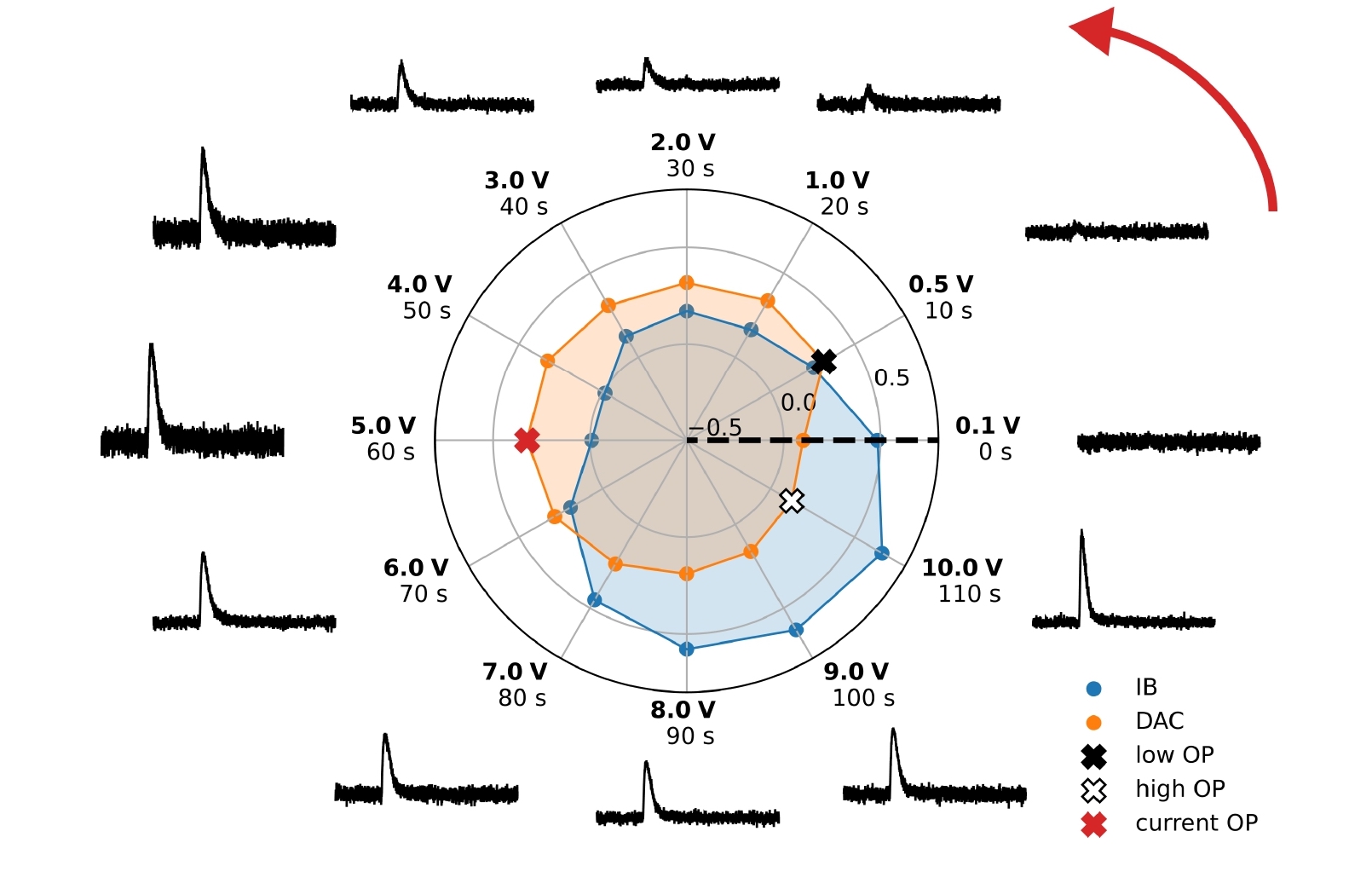
Optimal Operation of Cryogenic Calorimeters Through Deep Reinforcement Learning
Published at Comput. Softw.Big Sci.: https://link.springer.com/article/10.1007/s41781-024-00119-y
Cryogenic phonon detectors with transition-edge sensors achieve the best sensitivity to sub-GeV/c2 dark matter interactions with nuclei in current direct detection experiments. In such devices, the temperature of the thermometer and the bias current in its readout circuit need careful optimization to achieve optimal detector performance. This task is not trivial and is typically done manually by an expert. In our work, we automated the procedure with reinforcement learning in two settings. First, we trained on a simulation of the response of three CRESST detectors used as a virtual reinforcement learning environment. Second, we trained live on the same detectors operated in the CRESST underground setup. In both cases, we were able to optimize a standard detector as fast and with comparable results as human experts. Our method enables the tuning of large-scale cryogenic detector setups with minimal manual interventions.
Detector Development for the CRESST Experiment
Published at J. of Low Temp. Phys.: https://link.springer.com/article/10.1007/s10909-024-03154-6
Recently low-mass dark matter direct searches have been hindered by a low energy background, drastically reducing the physics reach of the experiments. In the CRESST-III experiment, this signal is characterised by a significant increase of events below 200 eV. As the origin of this background is still unknown, it became necessary to develop new detector designs to reach a better understanding of the observations. Within the CRESST collaboration, three new different detector layouts have been developed and they are presented in this contribution.
Light Dark Matter Search Using a Diamond Cryogenic Detector
Published in Eur. Phys. J. C: https://doi.org/10.1140/epjc/s10052-024-12647-3
Diamond operated as a cryogenic calorimeter is an excellent target for direct detection of low-mass dark matter candidates. Following the realization of the first low- threshold cryogenic detector that uses diamond as absorber for astroparticle physics applications, we now present the resulting exclusion limits on the elastic spin-independent interaction cross-section of dark matter with diamond. We measured two 0.175 g CVD (Chemical Vapor Deposition) diamond samples, each instrumented with a Transition Edge Sensor made of Tungsten (W-TES). Thanks to the energy threshold of just 16.8 eV of one of the two detectors, we set exclusion limits on the elastic spin-independent interaction of dark matter particles with carbon nuclei down to dark matter masses as low as 0.122 GeV/c2. This work shows the scientific potential of cryogenic detectors made from diamond and lays the foundation for the use of this material as target for direct detection dark matter experiments.
High-Dimensional Bayesian Likelihood Normalisation for CRESST's Background Model
Published in JINST: https://iopscience.iop.org/article/10.1088/1748-0221/19/11/P11013
Using CaWO4 crystals as cryogenic calorimeters, the CRESST experiment searches for nuclear recoils caused by the scattering of potential Dark Matter particles. A reliable identification of a potential signal crucially depends on an accurate background model. In this work we introduce an improved normalisation method for CRESST’s model of the electromagnetic backgrounds. Spectral templates, based on Geant4 simulations, are normalised via a Bayesian likelihood fit to experimental background data. Contrary to our previous work, no assumption of partial secular equilibrium is required, which results in a more robust and versatile applicability. Furthermore, considering the correlation between all background components allows us to explain 82.7% of the experimental background within [1 keV, 40 keV], an improvement of 18.6% compared to our previous method.
Proceedings of 14th International Conference on Identification of Dark Matter
Two contributions from CRESST collaboration were published at IDM2022:
"Latest observations on the low energy excess in CRESST-III"
https://scipost.org/SciPostPhysProc.12.013
"Characterisation of low background CaWO4 crystals for CRESST-III"
https://scipost.org/SciPostPhysProc.12.031

Observation of a low energy nuclear recoil peak in the neutron calibration data of the CRESST-III Experiment
Published in Phys. Rev. D: https://doi.org/10.1103/PhysRevD.108.022005
New-generation direct searches for low mass dark matter feature detection thresholds at energies well below 100 eV, much lower than the energies of commonly used X-ray calibration sources. This requires new calibration sources with sub-keV energies. When searching for nuclear recoil signals, the calibration source should ideally cause mono-energetic nuclear recoils in the relevant energy range. Recently, a new calibration method based on the radiative neutron capture on 182W with subsequent de-excitation via single γ-emission leading to a nuclear recoil peak at 112 eV was proposed. The CRESST-III dark matter search operated several CaWO4-based detector modules with detection thresholds below 100 eV in the past years. We report the observation of a peak around the expected energy of 112 eV in the data of three different detector modules recorded while irradiated with neutrons from different AmBe calibration sources. We compare the properties of the observed peaks with Geant-4 simulations and assess the prospects of using this for the energy calibration of CRESST-III detectors.
2022
Results on sub-GeV Dark Matter from a 10 eV Threshold CRESST-III Silicon Detector
Published in Phys. Rev. D: https://doi.org/10.1103/PhysRevD.107.122003
We present limits on the spin-independent interaction cross section of dark matter particles with silicon nuclei, derived from data taken with a cryogenic calorimeter with 0.35 g target mass operated in the CRESST-III experiment. A baseline nuclear recoil energy resolution of (1.36 ± 0.05) eVnr, currently the lowest reported for macroscopic particle detectors, and a corresponding energy threshold of (10.0 ± 0.2) eVnr have been achieved, improving the sensitivity to light dark matter particles with masses below 160 MeV/c2 by a factor of up to 20 compared to previous results. We characterize the observed low energy excess, and we exclude noise triggers and radioactive contaminations on the crystal surfaces as dominant contributions.
